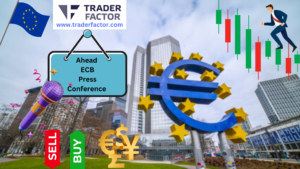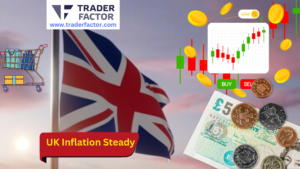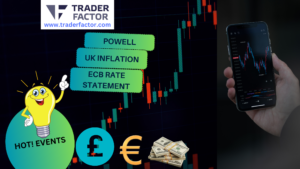In a highly anticipated move, the US Federal Reserve (Fed) has announced an increase in the policy rate, federal funds rate, by 25 basis points (bps) to a range of 5.25-5.5%. This decision aligns with market expectations and was made in the July policy meeting.
FOMC Chairman Jerome Powell Provides Insights
Following the rate hike, FOMC Chairman Jerome Powell shared his perspectives on the policy outlook and answered questions from the press. He emphasized the Fed’s commitment to using all available tools to reach their inflation target and acknowledged the uncertainty surrounding policy lags. Powell also noted that inflation has proven to be more resilient than anticipated and expressed confidence in the effectiveness of current monetary policy.
Looking Ahead
Chairman Powell acknowledged the cooling in the private sector job market and highlighted the uncertainty surrounding future outlooks. While he did not indicate any cuts for the rest of the year, he noted that the path beyond the next meeting and into next year remains uncertain.
Catch-All Summary
The Fed’s decision to raise interest rates in line with expectations showcases their focus on stabilizing inflation and maintaining an effective monetary policy. Chairman Powell’s remarks provide insight into the Fed’s outlook and address concerns surrounding the economy and job market.
Market Reaction
As a result of the Fed rate hike, the GBP/USD pair has broken previous highs and continues to show a strong bullish correction. Trading between 1.2875 and 1.2958, it has remained within a range of 1.2895 to 1.2985.
The NZD/USD bounced back from its daily losses and surged towards the 0.6220 level.
Gold price fluctuates as Federal Reserve raises interest rates by 25 bps to 5.25-5.50%. Market reacts with volatility, pushing gold to a range of $1,973 to $1,965.
The Euro to US Dollar exchange rate experienced a slight uptick, climbing from 1.1050 to 1.1079 subsequent to the Federal Reserve’s decision to raise interest rates by 25 basis points. Following the announcement, the US currency experienced a marginal decline as yields in the United States remained stable.
The price of Bitcoin is stuck in a limited range below the psychological threshold of $30,000 as the federal reserve increases interest rates.
In the wake of the Federal Reserve (Fed) verdict, the USD DXY gauge persists in displaying fragility, hovering around 101.19, while the USD/JPY currency pair lingers in negative territory at 140.40.
The Impact of Fed Rate Hike on the Forex Market
The Federal Reserve plays a crucial role in shaping the global economy, and its decisions regarding interest rates have a significant impact on various financial markets.
Understanding the Fed and Interest Rate Decisions
The Federal Reserve, also known as the Fed, is the central banking system of the United States. One of its primary responsibilities is to set and adjust interest rates based on economic conditions.
These interest rate decisions are made during meetings of the Federal Open Market Committee (FOMC), which consists of key policymakers within the Fed. Traders closely monitor these meetings and announcements to anticipate shifts in monetary policy that can impact the forex market.
Impact of Fed Rate Hike on Currency Values
When the Fed decides to increase interest rates, it signals confidence in the strength of the economy. Higher interest rates make holding a particular currency more attractive, leading to increased demand. As a result, the value of that currency tends to rise relative to other currencies.
Forex traders analyze these rate hikes and adjust their strategies accordingly to capitalize on potential shifts in currency values.
Relationship between Interest Rates and Exchange Rates
Interest rates and exchange rates have an intertwined relationship. Higher interest rates generally lead to a stronger currency, as they attract foreign investment and increase demand for the currency.
On the other hand, lower interest rates tend to weaken a currency, as they make it less appealing for investors seeking higher returns. Forex traders closely monitor interest rate movements to gauge potential fluctuations in exchange rates.
Forex Trading Strategies and Interest Rate Changes
Forex traders incorporate interest rate differentials into their trading strategies. Trading currencies with higher interest rate differentials can increase the probability of successful trades.
Traders may engage in carry trade strategies, which involve borrowing money in a low-yielding currency and investing in a higher-yielding currency. A Fed rate hike can cause traders to adjust their carry trade strategies to align with changing interest rate differentials.
Impact on Profitability and Market Volatility
The impact of a Fed rate hike on the forex market can be significant, leading to increased market volatility. Currency pairs can experience sudden fluctuations as market participants interpret and react to the interest rate decision.
Forex traders must closely monitor these events and adapt their trading strategies to mitigate risks and capitalize on potential profit opportunities. Follow the TraderFactor Economic Calendar for up-to-date events.
Takeaway
A Fed rate hike has a profound impact on the forex or currency market. Changes in interest rates influence currency values, exchange rates, and ultimately shape forex trading strategies. Forex traders closely analyze the FOMC statements and interest rate decisions to anticipate market movements and adjust their trading strategies accordingly. Understanding the relationship between the Fed’s actions and the forex market is essential for navigating the dynamic world of currency trading.
Disclaimer:
All information has been prepared by TraderFactor or partners. The information does not contain a record of TraderFactor or partner’s prices or an offer of or solicitation for a transaction in any financial instrument. No representation or warranty is given as to the accuracy or completeness of this information. Any material provided does not have regard to the specific investment objective and financial situation of any person who may read it. Past performance is not a reliable indicator of future performance.
Author
-

Phyllis Wangui is a Financial Analyst and News Editor with qualifications in accounting and economics. She has over 20 years of banking and accounting experience, during which she has gained extensive knowledge of the forex, stock news, stock market, forex analysis, cryptos and foreign exchange industries. Phyllis is an avid commentator on these topics and loves to share her insights with others through financial publications and social media platforms.
View all posts



















